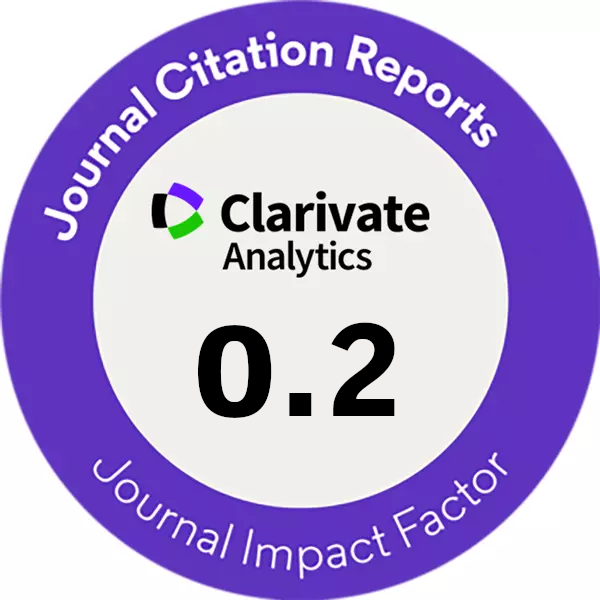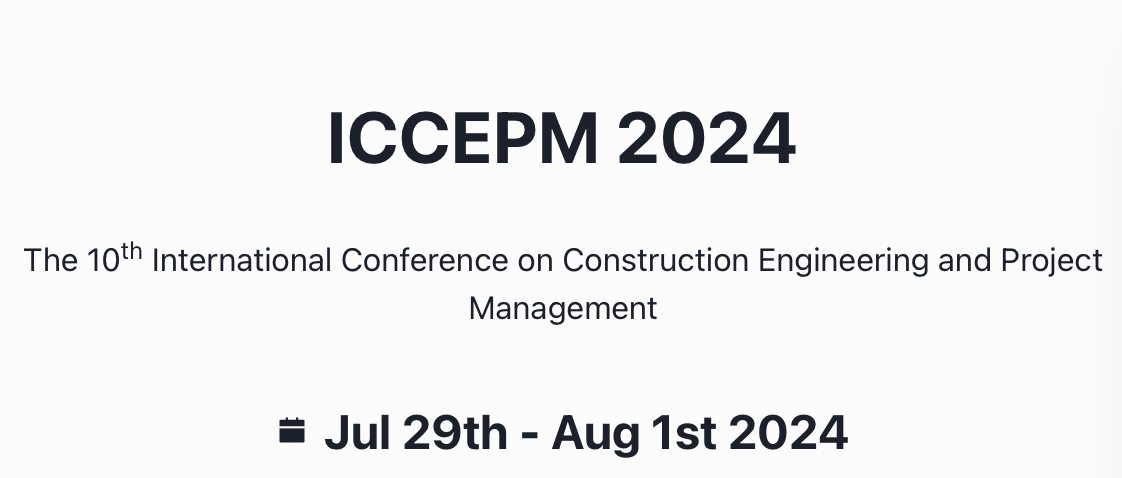Research on the combined damping technology of shallow buried large-section loess tunnel
DOI:
https://doi.org/10.14311/CEJ.2024.04.0035Keywords:
shallow buried, large cross-section, loess tunnel, lining stiffness, shock absorption jointAbstract
Due to the uniqueness of loess structures and properties and the higher seismic technical requirements for tunnel engineering, it is imperative to study the seismic response of damping loess tunnels. Based on the Xichengshan tunnel project, a three-dimensional numerical model is established by finite element software to analyze the stress and strain response of the structure under different spacing of shock absorption joints and different stiffness lining. The combined damping measures of " rigid lining+ shock absorption joint " are proposed, and the damping effect of the combined damping measures is further analyzed. The results show that the setting of the shock absorption joint can effectively reduce the dynamic response of the loess tunnel under earthquake, and the recommended value of shock absorption spacing of the loess tunnel is 10 m. The dynamic response of the structure is different with different lining stiffness. The greater the stiffness, the greater the structural stress and the smaller the deformation. The combined damping measures of " rigid lining + shock absorption joint " can give full play to the advantages of single damping measures and effectively reduce the damage of earthquake to loess tunnel.
Downloads
References
Wang Y, Wang Q, Zhong X M, et al. Seismic response analysis of the Daliang tunnel during the Menyuan Ms 6.9 earthquake [J]. CHINA EARTHQUAKE ENGINEERING JOURNAL, 2023, online, DOI: https://doi.org/10.20000/j.1000-0844.20230202003.
Yan Y, The tunnel damage effects and implications of the coseismic rupture of Menyuan Ms 6.9 Earthquake in Qinghai, China[J]. JOURNAL OF GEOMECHANICS, 2023, online, DOI: https://doi.org/10.12090/j.issn.1006-6616.2023027.
Sun C X, Jiang T, Lv X C, et al. Effect of earthquake on pressure arch above the tunnel[J]. LITHOSPHERE, 2021,7: 9576745, DOI: https://doi.org/10.2113/2022/9576745.
Shen Y S, Gao B, Yang X M, et al. Seismic damage mechanism and dynamic deformation characteristic analysis of mountain tunnel after Wenchuan earthquake[J]. ENGINEERING GEOLOGY, 2014, 180: 85-98, DOI: https://doi.org/10.1016/j.enggeo.014.7.017.
Cui G Y, Wang M N, Yu L, et al. Model test study of shock absorption joint damping technology of crossing stick-slip fracture tunnel[J]. CHINESE JOURNAL OF ROCK MECHANICS AND ENGINEERING, 2013, 32(8): 1604-1608. DOI: https://do i.org/10.3969/j.issn.1000-6915.2013.08.012.
Xin C L, Gao B, Zhou J M, et al. Shaking table tests of conventional anti-seismic and damping measures on fault-crossing tunnels[J]. CHINESE JOURNAL OF ROCK MECHANICS AND ENGINEERING, 2014, 33(10): 2048-2054. DOI: https://doi.org/10.13722/ j.cnki.jrme.2014.10.011.
Wen H Y, Zhou Z Y, Li X M, et al. Evaluation of the damping layer between the tunnel lining and surrounding rock via a shaking table test[J]. SUSTAINABILITY, 2023, 15: 13244. DOI: https://doi.org/10.3390/su1517132 44.
Wang J, Hu Y L, Fu B Y, et al. Study on antiseismic effect of different thicknesses of shock absorption layer on urban shallow buried double arch rectangular tunnel [J]. SHOCK AND VIBRATION, 2022, 4863756, DOI: https://doi.org/10.1155/2022/4863756.
Huang C X, Wang X H, Zhou H, et al. Damping effects of different shock absorbing materials for tunnel under seismic loadings[J]. JOURNAL OF VIBROENGINEERING, 2019, 21(5): 1353-1372. DOI: https://doi.org/10.21595/jve.2019.20495.
Huang Z K, Ning C L, Zhang D M, et al. PDEM-based seismic performance evaluation of circular tunnels under stochastic earthquake excitation [J]. GEORISK-ASSESSMENT AND MANAGEMENT OF RISK FOR ENGINEERED SYSTEMS AND GEOHAZARDS, 2023, online, DOI: https://doi.org/10.1080/17499518.2023.2257171.
Ding Z D, Liao M R, Xiao N R, et al. Research on aseismic measures and adaptability of tunnels crossing and active faults[J]. JOURNAL OF NATURAL DISASTERS, 2022, 31(5): 130-138. DOI: https://doi.org/10.13577/j.jnd.2022.0515.
Li Z Y. Study on vibration effect of pre-splitting crack in tunnel excavation under thermal explosion loading[J]. CASE STUDIES IN THERMAL ENGINEERING, 2021, 28: 101401. DOI: https://doi.org/10.1016/j.csite.2021.101401.
Zhou T L, Dong C S, Fu Z P, et al. Study on seismic response and damping performance of tunnels with double shock absorption layer[J]. KSCE JOURNAL OF CIVIL ENGINEERING. 2022, 26(5): 2490-2508. DOI: 10.1007/s12205-022-1862-y
Li P P, Qiu W E, Lu F, et al. Quasi-static test study of tunnel with resistance-limiting shock absorption layer in high-intensity seismic[J]. FRONTIERS IN EARTH SCIENCE. 2023, 10: 1029929, DOI: https://doi.org/10.3389/feart.2022.1029929.
Gui G Y, Song B H, Wang D Y. Seismic model test research on the combination of rigidity with flexibility of tunnel portal in high intensity seismic areas[J]. GEOMATICS NATURAL HAZARDS & RISK. 2021, 12(1): 1195-1211. DOI: https://doi.org/10.1080/1 9475705.2021.1921057.
Zhou X H, Cheng X S, Qi L, et al. Shaking table model test of loess tunnel structure under rainfall[J]. KSCE JOURNAL OF CIVIL ENGINEERING. 2021, 25(6): 2225-2238. DOI: https://doi.org/10.1007/s12205-021-1064-z.
Sun W Y, Yan S H, Ma Q G, et al. Dynamic response characteristics and failure mode of a bias loess tunnel using a shaking table model test[J]. TRANSPORTATION GEOTECHNICS. 2021, 31: 100659, DOI: https://doi.org/10.1016/j.trgeo.2021.100659.
Sun W, Liang Q G, Liu Q X, et al. Amplification effect of the portal section of loess tunnels under strong earthquake[J]. CHINA EARTHQUAKE ENGINEERING JOURNAL, 2021, 43(4): 936-941. DOI: https://doi.org/10.3969/j.issn.1000-0844.2021.04.935.
Cheng X S, Zhou X H, Wang P, et al. Shaking table model test of loess tunnel[J]. CHINA J. HIGHW. TRANSP., 2021, 34(6): 134-145. DOI: https://doi.org/10.19721/j.cnki.1001-7372.2021.06.014
Cheng X S, Zhou X H, Liu H B, et al. Numerical analysis and shaking table test of seismic response of tunnel in a loess soil considering rainfall and traffic load[J]. ROCK MECHANICS AND ROCK ENGINEERING. 2021, 54(3):1005-1025. DOI: https://doi.org/10.1007/s00603-020-02291-0.
Xu Z, Du X, Xu C, et al. Numerical research on seismic response characteristics of shallow buried rectangular underground structure[J]. SOIL DYNAMICS AND EARTHQUAKE ENGINEERING, 2019, 116: 242-252. DOI: https://doi.org/10.1016/j.soild yn.2018.10.030.
MA C, LU D, DU X. Seismic performance upgrading for underground structures by introducing sliding isolation bearings[J]. TUNNELLING & UNDERGROUND SPACE TECHNOLOGY, 2018, 74: 1-9. DOI: https://doi.org/10.1016/j.tust.2018.01.007.
Specifications for design of highway tunnels Section 1 Civil engineering[S]. Industry Standards of China, China Communications Press, 2019. (In Chinese).
Liu J B, Li B. Three-dimensional viscoelastic static-dynamic unified artificial boundary[J]. SCIENCE IN CHINA SER E ENGINEERING & MATERIALS SCIENCE. 2005, 35(9): 966-980. DOI: https://doi.org/10.3321/j.issn:1006-9275.2005.09.008,
Ma S J, Chi M J, Chen H J, et al. Implementation of viscous-spring boundary in ABAQUS and comparative study on seismic motion input methods[J]. CHINESE JOURNAL OF ROCK MECHANICS AND ENGINEERING, 2020, 39(7): 1446-1455. DOI: https://doi.org/10.13722/j.cnki.jrme.2019.1068.
Liu J B, Du Y X, Yan Q S. Realization of viscoelastic artificial boundary and ground motion input in general finite element software [C]. Civil Engineering Society, Proceedings of the Third National Symposium on Earthquake Prevention and Disaster Reduction Engineering, (In Chinese).
Downloads
Published
Issue
Section
License
Copyright (c) 2024 Stavební obzor - Civil Engineering Journal

This work is licensed under a Creative Commons Attribution-NonCommercial 4.0 International License.
Authors who publish with this journal agree to the following terms:
- Authors retain copyright and grant the journal right of first publication with the work simultaneously licensed under a Creative Commons Attribution License that allows others to share the work with an acknowledgement of the work's authorship and initial publication in this journal.
- Authors are able to enter into separate, additional contractual arrangements for the non-exclusive distribution of the journal's published version of the work (e.g., post it to an institutional repository or publish it in a book), with an acknowledgement of its initial publication in this journal.
- Authors are permitted and encouraged to post their work online (e.g., in institutional repositories or on their website) prior to and during the submission process, as it can lead to productive exchanges, as well as earlier and greater citation of published work (See The Effect of Open Access).









